Opinion
Bob Ross May Have Been the Most Popular Artist of 2020. Here’s Why It’s Not Just a ‘Happy Little Accident’
Here are five reasons for his persistent—and growing—popularity.
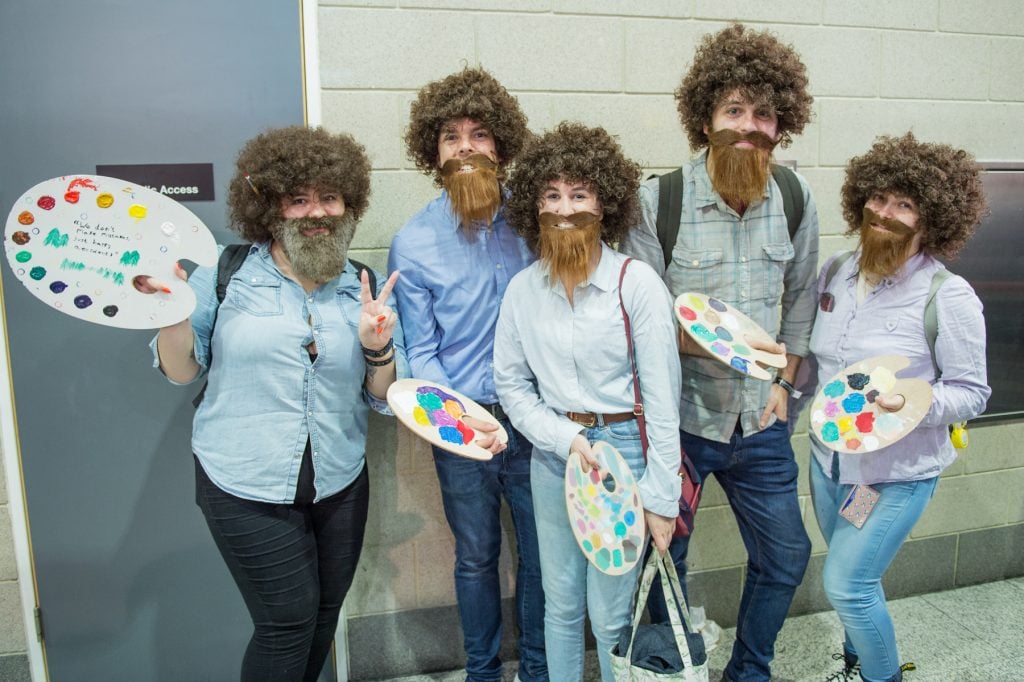
Here are five reasons for his persistent—and growing—popularity.

Ben Davis

Because it is a fun thing to talk about at the end of a monstrous year—and because there are actually things to say about the phenomenon—I thought I’d close the year by writing about the present-day Bob Ross Renaissance.
2020 was a bad year in almost every way imaginable, but it was a good year for the late PBS star. For one, the “Bob Ross Experience” opened in Indiana, where you can be immersed in the artist’s work and paint along with him and teachers trained in the Bob Ross Method. A New York Times reporter even penned an essay about the transformative effect that the experience had on her.
Whatever your preferred channel of consuming culture, there is a Bob Ross option for you. A standalone Bob Ross Channel launched on TV. The Greater Cannabis Company announced a line of Ross-themed “beauty and cosmetics products.” If you’re a Bob Ross-loving gamer, you had the choice of acquiring a Bob Ross Monopoly set or a new Bob Ross-themed expansion pack for Magic: The Gathering. All of these launched this year.
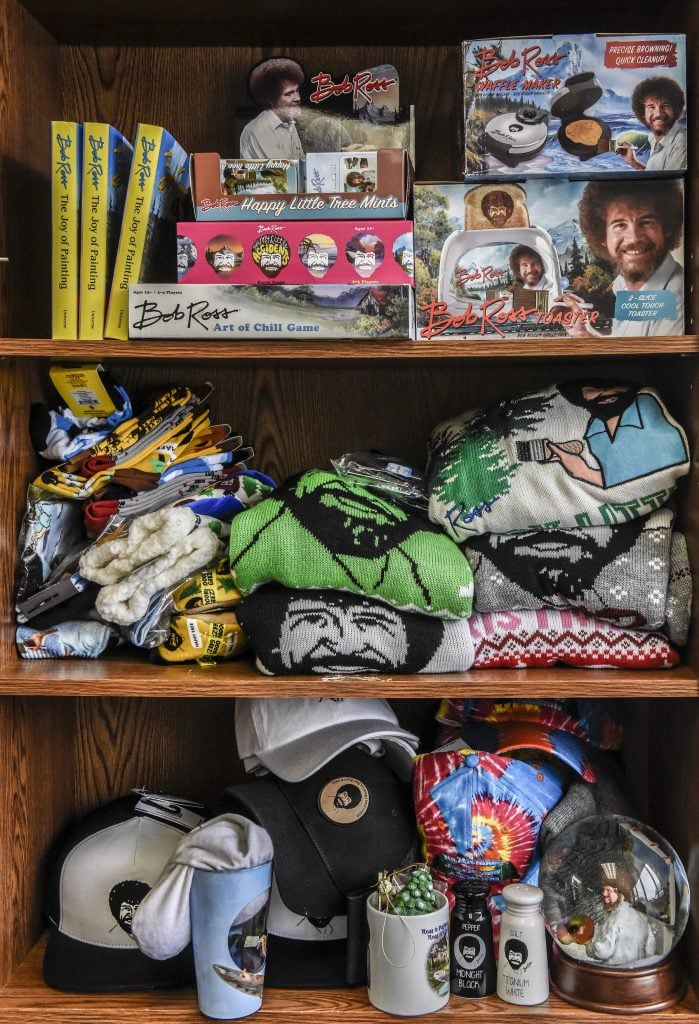
Merchandise at Bob Ross, Inc., the official structure behind the iconic PBS painting instructor, in Herndon, Virginia. (Photo by Bill O’Leary/The Washington Post via Getty Images.)
Last year, the painter who once modestly said that his art would never be shown in the Smithsonian actually made it into the Smithsonian, which acquired a handful of his paintings. I don’t think it’s inaccurate to say that Bob Ross is now, by some measures, the most famous postwar American artist—and his fame has actually increased in the recent past. It was only in the last half decade that interest in him (in terms of web searches at least) surged past Andy Warhol on a consistent basis.
Odd as it may seem, I think Bob Ross’s offbeat afterlife has something to tell us about what’s happening in The Culture.
Bob Ross conjured his woozy landscapes from a palette of named colors that he encouraged you to see as distinct entities with distinct powers, from Titanium White to Van Dyke Brown. Similarly, the Bob Ross Renaissance is formed from a number of discrete energy streams that are flowing through visual culture as a whole, and you can name them individually.
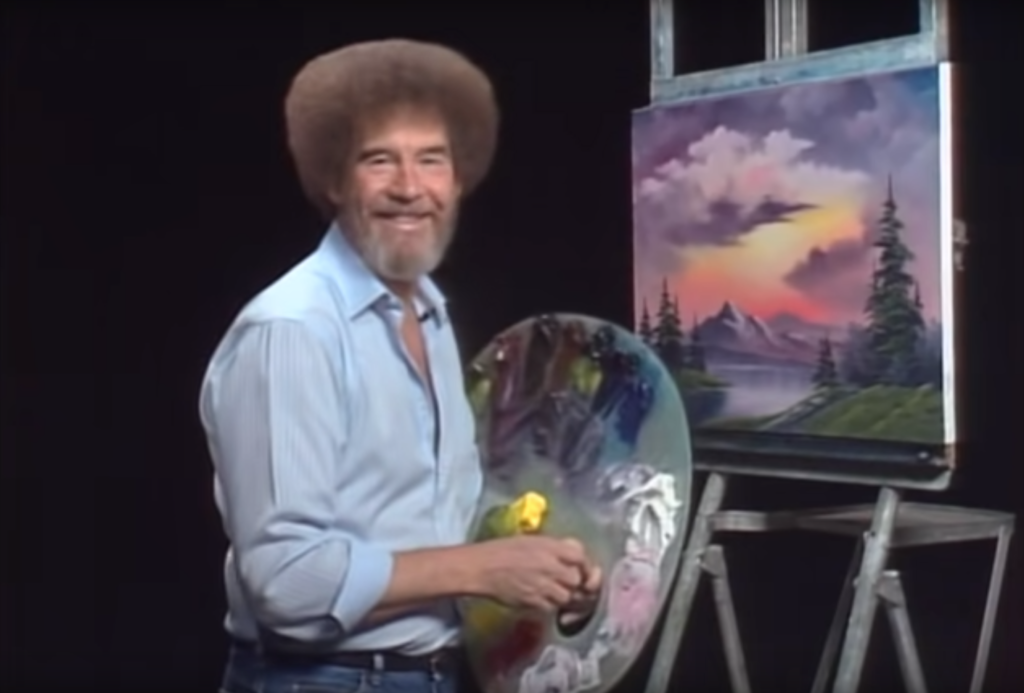
Bob Ross in The Joy of Painting. Photo via YouTube.
Think pieces trying to grapple with Bob Ross’s tenacious appeal—like this one from the Atlantic, or this one from Frieze—inevitably start here: He is a soothing, non-judgmental presence in a world that has felt very turbulent and polarized in recent years. He is, in this sense, an avatar of “edgeless culture”—as in, the opposite of edgy culture.
Scan the Bob Ross news of the last year and you’ll find any number of articles that start with “this is what we need right now.” A general therapeutic language has entered cultural writing, which Ross’s persona chimes with: “If painting does nothing else for you, it should make you happy,” he once said. The resurgence of interest in the artist belongs to the same cultural moment as the new interest in another PBS star and avatar of general kindness, Mr. Rogers.
Ross’s appeal is thus not just a throwback. It’s riding a larger, very contemporary zeitgeist. Earlier this year, on The Cut, writer Molly Fischer described the “millennial aesthetic” in art and design as a return to sincerity after hipster irony; the invocation of a lot of self-help, self-care, and slogans of affirmation; and the domination of soothing colors, soft lines, and unthreatening subject matter.
Well, that is like a word cloud describing the Bob Ross persona. A happy little word cloud.
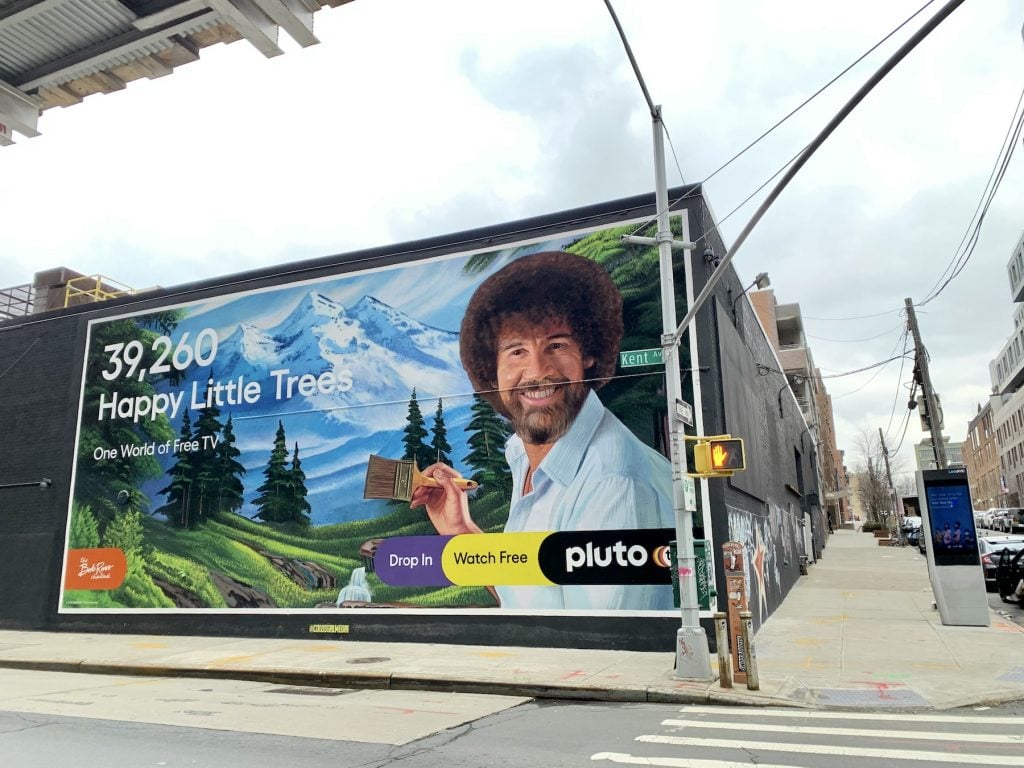
An ad for the Bob Ross Channel in Williamsburg, Brooklyn. (Photo by Ben Davis.)
Bob Ross’s signature perm is more famous than any of his paintings. “As much as he loved oil and canvas, his true resonance is with the screen,” Michael J. Mooney wrote in the Atlantic. Again, this resonates with a more general cultural development.
Karen Patel describes what she calls the “pressure to presence” for contemporary artists, that is, the emerging—or, really, now fully emerged—imperative that artists not just create art, but maintain and cultivate a media persona around their art. Instead of showing finished works, artists building a following on social media are often advised to post in-process images to show a work coming together or to show themselves in the studio, as a way to cultivate a sense of intimacy and connection with their audience.
It’s fitting, then, that Bob Ross would be such a big star in the social media age. He is the example of how the fascinations with the artist as low-key media star and with painting as a process have magnetism of their own—probably outshining the final power of his actual completed paintings.
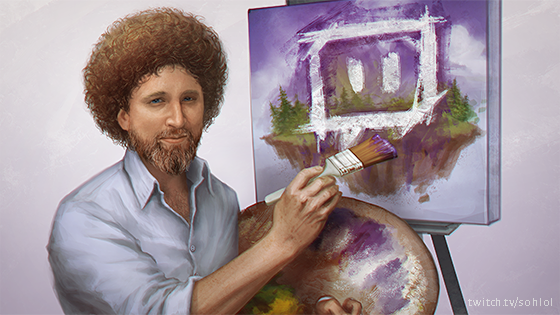
Twitch cartoon of “KappaBob” for the launch of Twitch Creative
The new Bob Ross surge really spiked into high gear amid the streaming of the entire run of The Joy of Painting on Twitch back in 2015 (I wrote about it at the time). This produced a lasting surge of interest, as watching Ross’s videos together and riffing on them became a communal participatory experience.
By contrast, the art industry this past year has been defined by the flailing of locked-down museums and cultural institutions forced to figure out how to fight for attention online. I think most people assume, by way of analogy, that art online functions like a painting: as an image you contemplate. Or like an event: as something unique that you experience.
But Bob Ross’s paintings are quite unremarkable as paintings. And watching his TV show is anything but unique. Streaming it online serves more as occasion for social interaction, as a reference point to gather around. This participatory, call-and-response social dimension is sorely lacking in most online art programming—but it’s the lifeblood of web culture.
From the early ads Ross did for MTV that first brought him mainstream fame to Ryan Reynolds’s goofs on him for Deadpool 2‘s ad campaign, Bob Ross’s ability to provoke sincere and enduring affection from an audience has always been partly powered by how easy Bob Ross is to make into a joke. The one isn’t just a side effect of the other; the two sides are actually symbiotic.
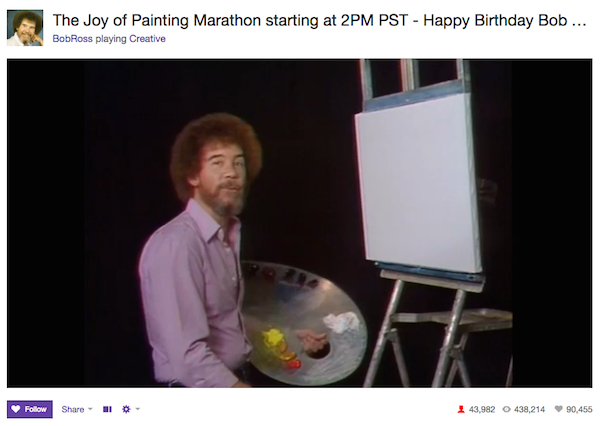
Screen capture of “The Joy of Painting Marathon” on Twitch.
The nostalgia cycle is 20 to 30 years—the time it takes a new generation to see the cultural landscape of their youth through rose-colored glasses. In that sense, Ross, who died in 1995, fits nicely in at the margin of the current nostalgia wave.
In general, we live in a time of cultural inflation: ever larger amounts of new culture are made from repackaging, rebooting, or generally reanimating whatever kitschy-sincere affectations there are out there to be mined. The fact that the most popular painter of the 2020s would be a PBS star who died several decades ago is just a case in point.
Ross’s art style actually lends itself particularly well to signifying the “comfortingly familiar.” His paintings are executed in a cozy realist style and conjure landscapes invented from the mind, out of some free-floating, pre-digested cultural image of what a landscape should be.
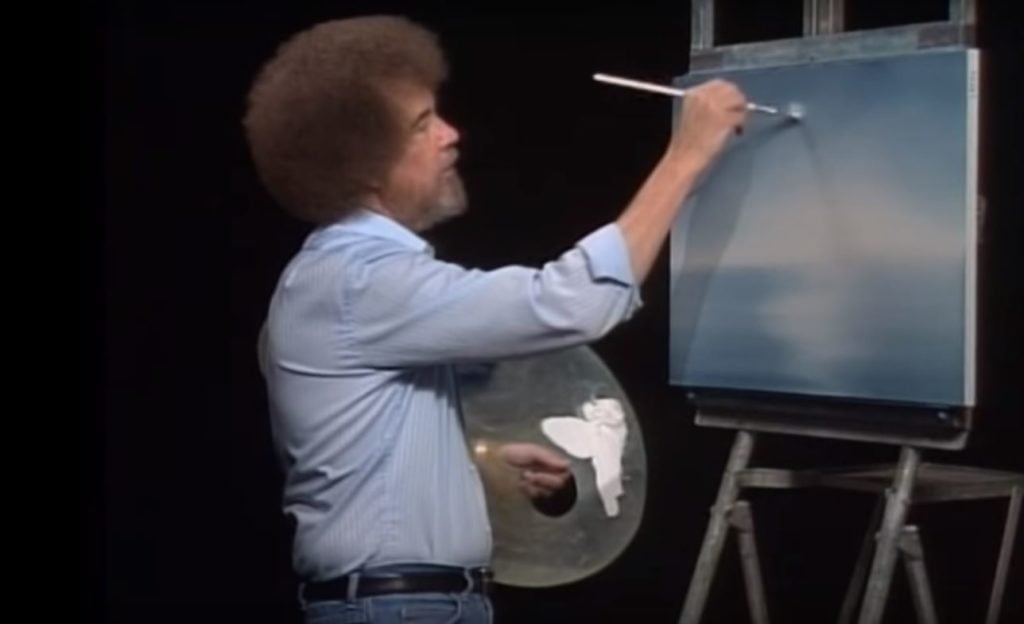
Bob Ross in “The Joy of Painting.” Photo via YouTube.
“It’s not traditional art. It’s not fine art,” Ross once said of his own work. “And I don’t try to tell anybody it is.”
By its nature, The Joy of Painting was not about making something extraordinary or difficult to achieve. It was about making something ordinary, that anyone could do. It’s very much an aesthetics of the relatable. This may be obvious, but it’s worth underlining: the reason so many people like Bob Ross is because the entire product is crafted to invite you in to see yourself in a Bob Ross painting.
He shares with other figures of comparable fame—Andy Warhol and Jeff Koons—a notably populist perspective and Svengali-like persona. “Pop art is about liking things,” Warhol quipped. “When people make judgments they close all the possibility around them,” Koons declared, arguing art is learning not to be critical of your own desires. Ross’s maxim that “there are no mistakes, only happy accidents” is on the same wavelength.
The difference, clearly, is that Bob Ross doesn’t identify with his audience’s desires as consumers. He identifies with his audience’s taste as amateur artists themselves.
In that sense he out-Pop arts the Pop artists. The most alluring image to sell isn’t of celebrity or sex or the commodity. It’s the idea of yourself as an artist, good enough and happy just as you are.